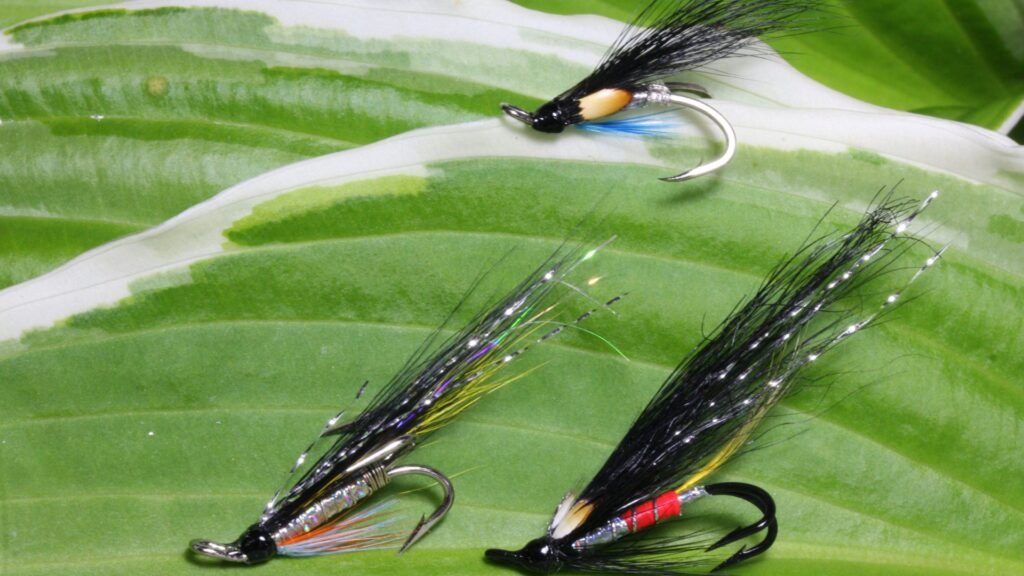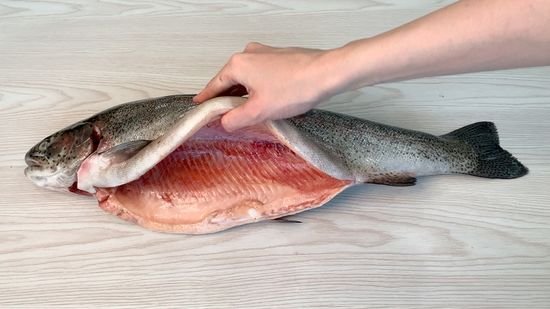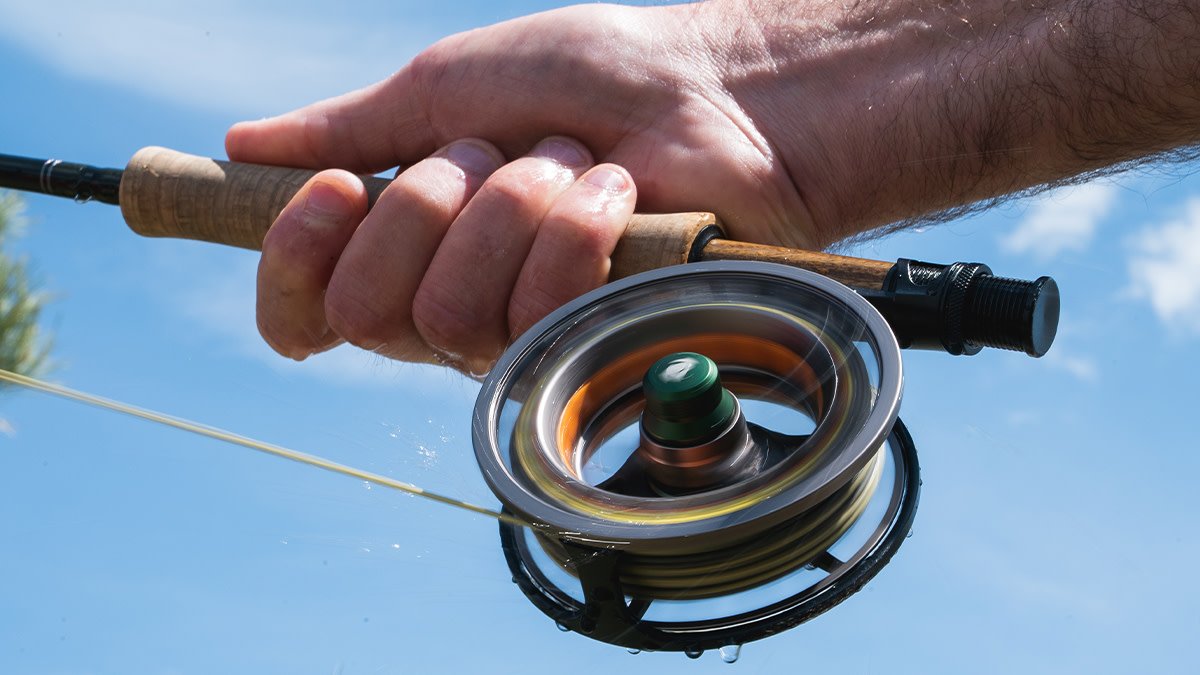When fishing for salmon in high water conditions, it’s important to use fly patterns that are highly visible, have strong movement, and can sink quickly to reach the fish. Here are some of the best salmon fly patterns that excel in these challenging conditions:

Best Salmon Fly Patterns for High Water Conditions
Intruder Fly
The Intruder Fly is known for its large profile and vibrant colors, making it highly visible in murky or fast-moving water. The combination of materials, including marabou, ostrich herl, and flash, creates a lifelike motion that attracts salmon even in tough conditions.
Tips for Use
- Use bright colors like pink, orange, or chartreuse.
- Incorporate heavy lead eyes or cone heads to ensure the fly sinks quickly.
- Swing the fly through deep runs and pools where salmon may be holding.
Egg-Sucking Leech
The Egg-Sucking Leech is a versatile pattern that combines the appeal of a leech with the added attraction of a bright egg head. This pattern is particularly effective in stained or high-water conditions due to its contrast and visibility.
Tips for Use
- Opt for a black body with a fluorescent pink or orange egg head.
- Use weighted versions to reach deeper water.
- Fish it with a slow, steady retrieve to mimic natural leech movements.
Conehead Bunny Leech
The Conehead Bunny Leech features a rabbit strip body that provides a lot of movement and a heavy conehead that helps the fly sink quickly. The natural materials and weighted head make it ideal for high water.
Tips for Use
- Choose dark colors like black or purple for low light and murky water.
- Add flash materials for extra visibility.
- Swing or strip the fly near the bottom where salmon are likely to be.
Flash Fly
The Flash Fly is designed to stand out in high water with its highly reflective materials. The use of Flashabou or similar materials creates a lot of light reflection, making the fly easy for salmon to spot.
Tips for Use
- Use bright and flashy colors such as silver, gold, or chartreuse.
- Incorporate heavy eyes or a weighted body to help the fly sink.
- Fish it with a varied retrieve to mimic the erratic movements of injured baitfish.
Marabou Spey Fly
Marabou Spey Flies are known for their long, flowing hackles and the use of marabou feathers, which create lifelike movement. These flies are effective in high water due to their large profile and movement.
Tips for Use
- Opt for color combinations like black and blue or purple and pink.
- Use flies with a heavy wire hook or added weight.
- Swing the fly through deep runs, allowing the current to impart natural movement.
Skagit Minnow
The Skagit Minnow is a streamer pattern that mimics small fish. Its large profile and bright colors make it highly visible in high water conditions.
Tips for Use
- Use bright color patterns like pink and white or chartreuse and white.
- Add weight with lead wraps or heavy eyes.
- Fish it with a strip retrieve to imitate the fleeing action of baitfish.
Stonefly Nymph
Stonefly Nymphs are effective in high water due to their heavy, durable construction and natural appearance. These patterns are designed to sink quickly and stay near the bottom, where salmon are often found during high water.
Tips for Use
- Choose large sizes and add extra weight with lead wraps or bead heads.
- Opt for natural colors like black, brown, or olive.
- Dead drift the fly along the bottom or use a slow retrieve.
Hobo Spey
The Hobo Spey is a modern spey pattern with a sleek profile and heavy construction. It’s designed to sink quickly and move naturally in the water, making it ideal for high water conditions.
Tips for Use
- Use bright or contrasting colors like black and orange or blue and purple.
- Add weight with a tungsten bead or conehead.
- Swing the fly through deep pools and runs, allowing the current to create lifelike movement.
Conclusion
When fishing for salmon in high water conditions, the key is to use fly patterns that are highly visible, can sink quickly, and exhibit strong movement. By incorporating these effective patterns and adjusting your fishing techniques to the conditions, you can increase your chances of success and make the most of your time on the water.



